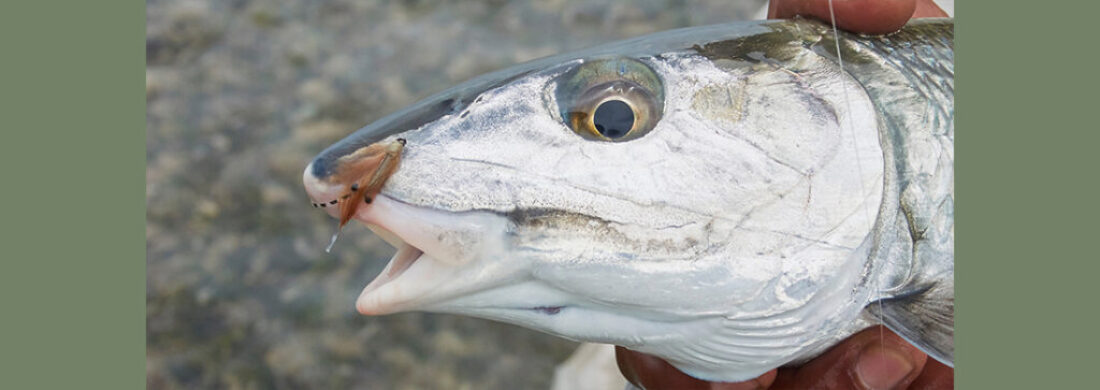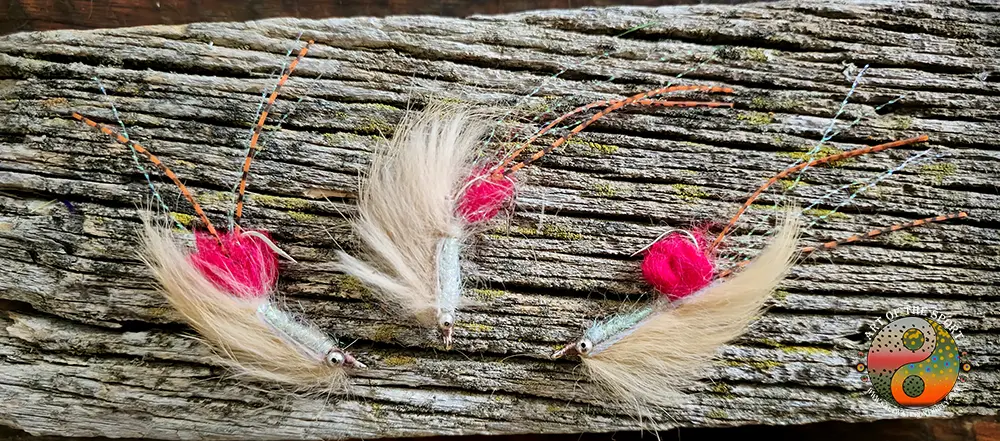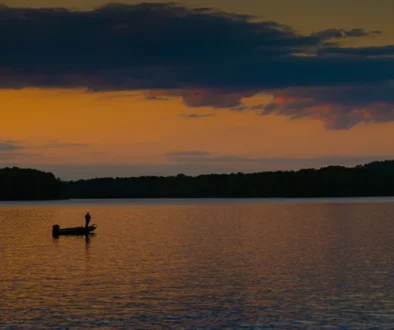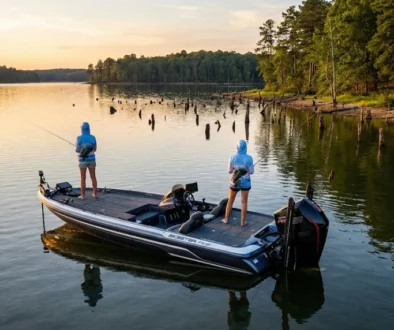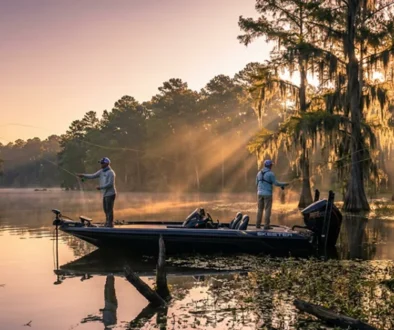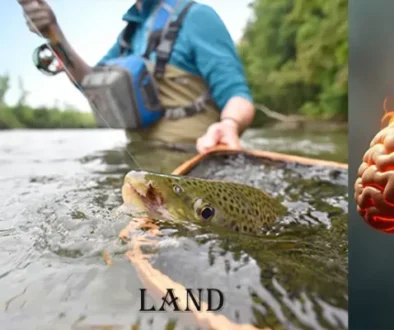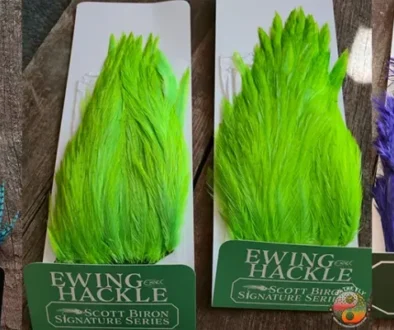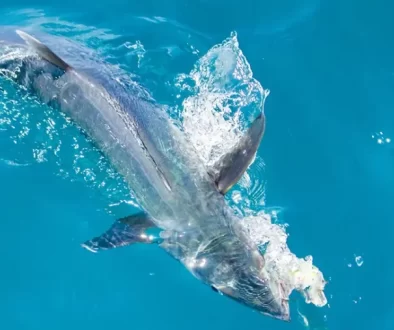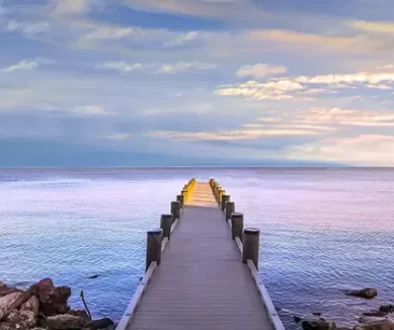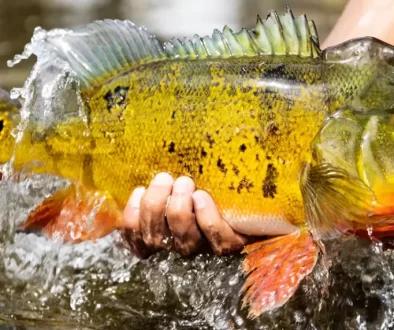Guide to the Top 25 Bonefish Fly Patterns and How to Fish Them
Standing on the bow of a flats boat, the sun glinting off the turquoise water, with a fly rod in hand… few things in life match the thrill of bonefishing. But to truly experience the magic of these silver ghosts, you need the right fly patterns. This post will explore the top 25 bonefish fly patterns and how to fish them, giving you a leg up on your next adventure. Whether you’re a seasoned angler or new to the sport, understanding the information presented here will give you a deep dive into effectively targeting bonefish.
Now, we’ll explore why selecting the right fly patterns is critical to a successful bonefishing trip. You’ll also learn about some of the issues you may face on the water.
Table of Contents
The Importance of Choosing the Right Fly Patterns
Bonefish are picky eaters whose diet largely consists of small crustaceans, shrimp, and worms. Therefore, selecting fly patterns that closely imitate their natural food sources is crucial.
There are endless options for fly patterns. Understanding the nuances of size, weight, color, and profile can dramatically increase your chances of attracting a bonefish’s attention. Factors such as water depth, bottom conditions, and wind can all play a part in deciding which flies to choose.
Top 25 Bonefish Fly Patterns
This list features a mix of time-tested classics and innovative newer patterns, covering various sizes, weights, and color combinations. It’s a great starting point for building your bonefish fly box.
1. Gotcha
A timeless classic, the Gotcha imitates a small shrimp. It is effective in a range of conditions. The pearl color is versatile and works well over various bottom types. Variations in tan, brown, and olive can also be productive.
You’ll often see this fly tied on a size 4 hook with bead chain eyes. It is perfect for many bonefish destinations, such as South Andros. Since the waters of The Bahamas hold many larger bonefish, anglers often use a size 2 hook.
2. Crazy Charlie
Another bonefishing staple, the Crazy Charlie, is simple yet effective. Its long, flowing tail provides alluring movement in the water. Just like the Gotcha, this pattern can be tied in various color combinations.
Bead chain or lead eyes determine the sink rate.
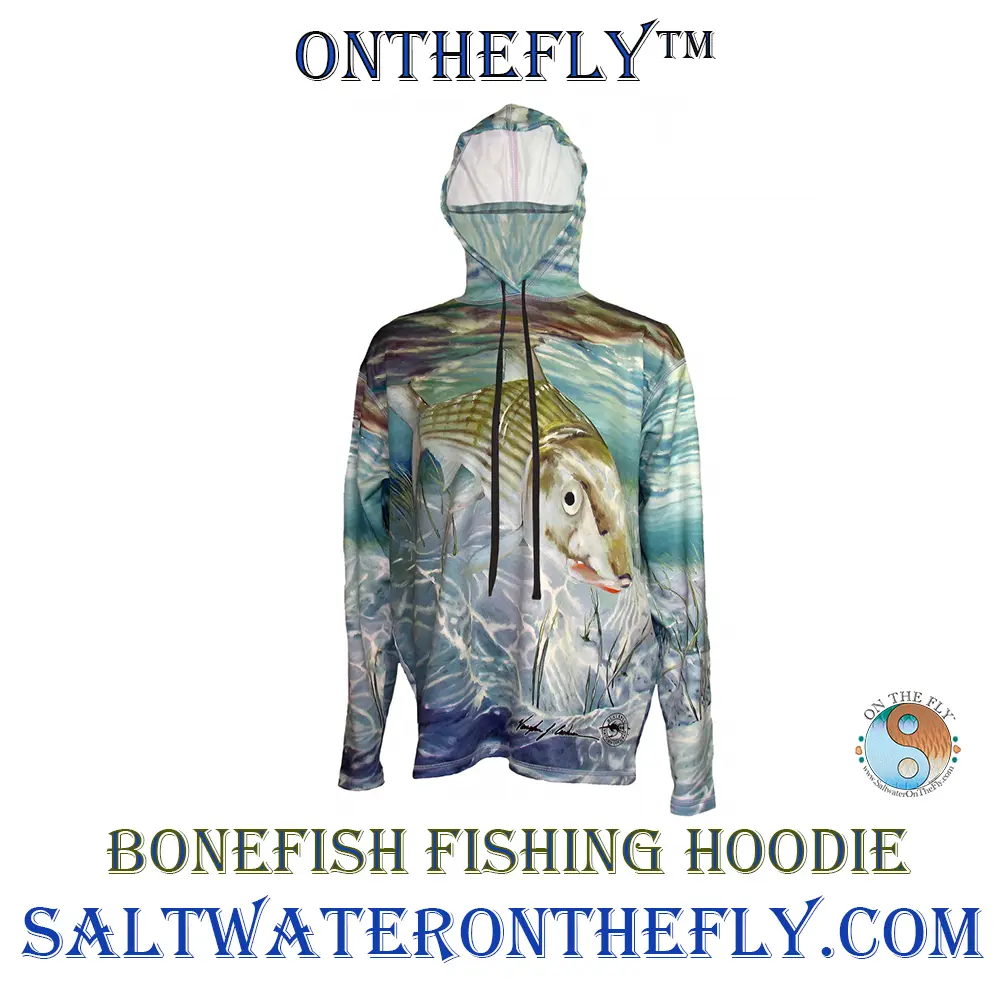
Graphic Bonefish Hoodie, Great for a Day on the Flats-UPF-50
Text content
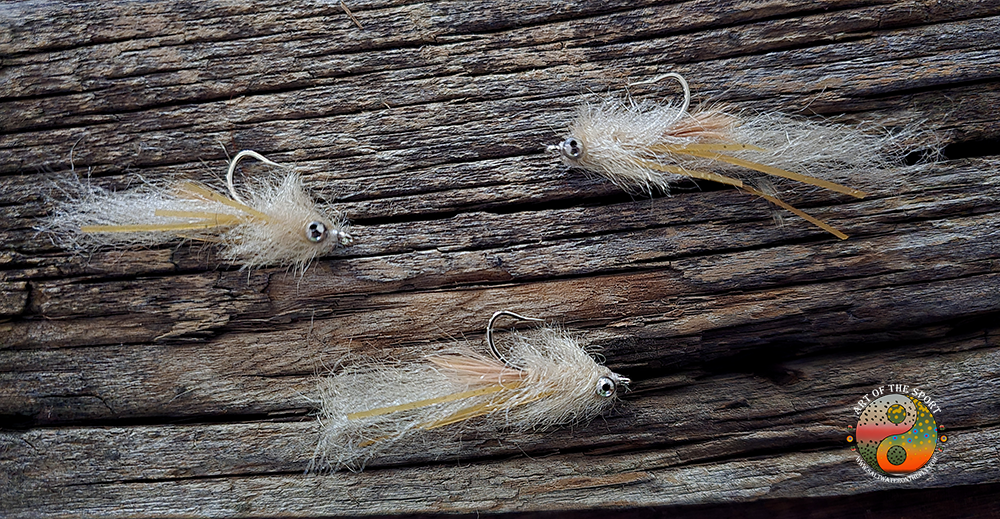
Mantis Tan Bonefish and Permit Pattern
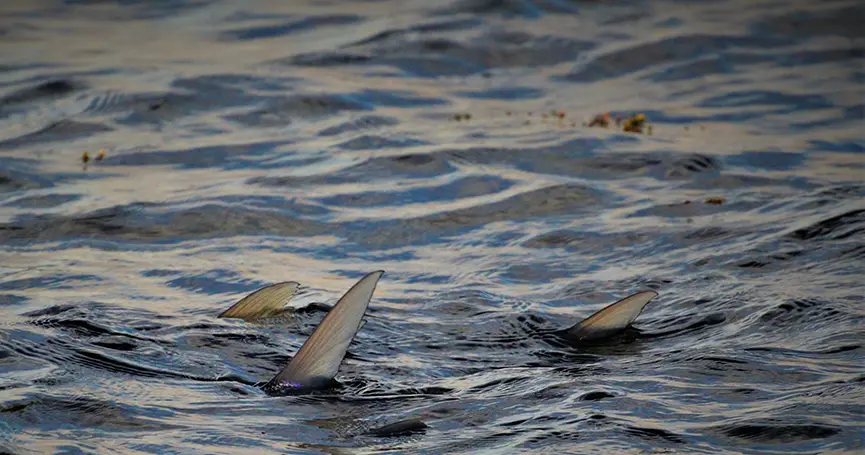
Tailing Bonefish
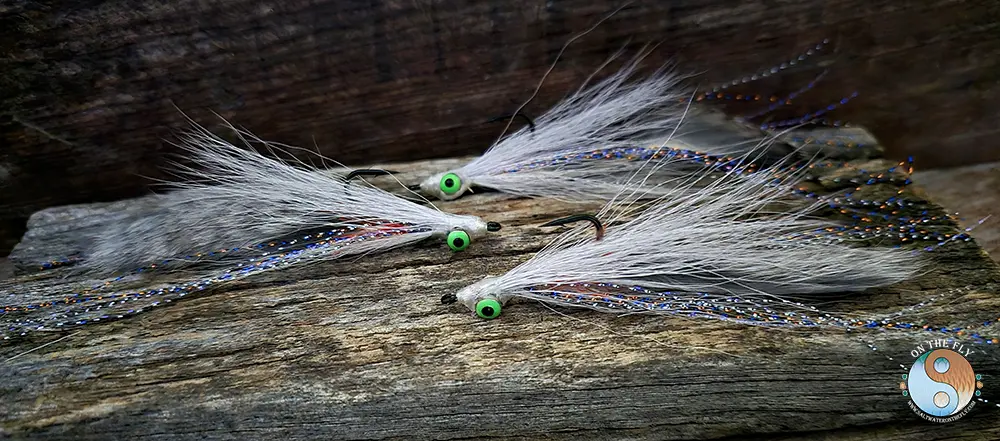
White-Grey Rabbit Clouser a Great Baitfish Pattern on the Flats for Bonefish
3. Clouser Minnow
Known for its versatility in freshwater and saltwater, the Clouser Minnow can also be effective for bonefish. This is especially true when they are feeding on small baitfish. The weighted eyes allow the fly to sink quickly.
I’ve been fishing more rabbit Clouser’s lately due to there success in attracting big fish. Check out the different Clouser Minnow Patterns Here.
4. Peterson’s Spawning Shrimp
If you’re seeking more specialized fly patterns, then this one might be for you. Some anglers believe this Peterson’s Spawning Shrimp is one of the best. It is known for landing softly and its durability. There have even been reports of anglers landing 19 bonefish in one day using just a single fly.
Peterson’s Spawning Shrimp Tying Instructions
Materials:
- Hook: Mustad C49S or equivalent, sizes 2 to 6
- Thread: White or cream-colored 8/0 or 6/0 Semperfli Thread.
- Body: Fluorescent pink or orange dubbing
- Tail: White or cream-colored Zonker strips or similar
- Eyes: Black or red mono eyes or beads
- Antennae: White or cream-colored tying thread
- Legs: White or cream-colored Sili-Legs or similar
- Wing case: Clear or pearl Mylar or similar
Step-by-Step Instructions:
Step 1: Create the Thread Base
- Start by threading your hook with the white or cream-colored thread.
- Wrap the thread around the hook shank 5-6 times to create a base.
Step 2: Form the Body
- Take a small amount of fluorescent pink or orange dubbing and wrap it around the thread base, forming a small, rounded body.
- Use a dubbing tool or a needle to shape and smooth out the dubbing.
Step 3: Create the Tail
- Cut a small piece of white or cream-colored Zonker strip and tie it to the back of the hook using the thread.
- Trim the excess Zonker strip to form a small, rounded tail.
Step 4: Add the Eyes
- Tie in a pair of black or red mono eyes or beads to the top of the head using the thread.
- Make sure the eyes are securely attached and evenly spaced.
Step 5: Create the Antennae
- Cut a small piece of white or cream-colored tying thread and tie it to the top of the head, just behind the eyes.
- Trim the excess thread to form a small, pointed antennae.
Step 6: Add the Legs
- Cut 2-3 small pieces of white or cream-colored Sili-Legs and tie them to the bottom of the body using the thread.
- Trim the excess Sili-Legs to form small, pointed legs.
Step 7: Create the Wing Case
- Cut a small piece of clear or pearl Mylar and tie it to the top of the body, just behind the head.
- Trim the excess Mylar to form a small, curved wing case.
Step 8: Finish the Fly
- Apply a small amount of head cement to the thread head and shape the fly to your liking.
- Your Peterson’s Spawning Shrimp is now complete!
Tips and Variations:
- Use different colors or shades of dubbing to create different variations of the fly.
- Experiment with different materials for the tail, legs, and wing case to create a more realistic or durable fly.
- Try using different hook sizes or styles to create a more specific or regional version of the fly.
Conclusion:
The Peterson’s Spawning Shrimp is a highly effective and versatile fly that can be used in a variety of saltwater fishing applications. With its bright, attractive colors and realistic shape, it’s sure to attract the attention of even the most discerning fish. By following these tying instructions, you’ll be able to create a high-quality Peterson’s Spawning Shrimp that will help you catch more fish and enhance your fly fishing experience.
5. Mantis Shrimp (Tan)
Considered one of the more essential bonefish fly patterns, the Mantis Shrimp in tan (size #4) is ideal in many circumstances, but especially for deeper waters. Since this fly sinks rapidly, consider going with the #6 if fishing shallower water.
7. Goat Belly Shrimp (Tan)
Although a fairly new fly, the Goat Belly Shrimp has gained popularity. It has quickly proven its worth in the bonefish world and can be just as effective for permit. The fly’s weighted body allows for faster sinking.
8. Permit Crab (Tan)
Rounding out the “best of the best” fly pattern recommendations is the Permit Crab. Tied with bead chain or lead eyes, and sinking quickly, this is not just a great option for permit but just about anything swimming in shallow water in search of a meal. The versatility of this fly makes it great to always keep some on hand.
9. Bonefish Bitter
The Bonefish Bitter, a variation of the Gotcha, incorporates a touch of orange in the tail, mimicking shrimp eggs. This extra trigger can often be irresistible to bonefish, especially during spawning season.
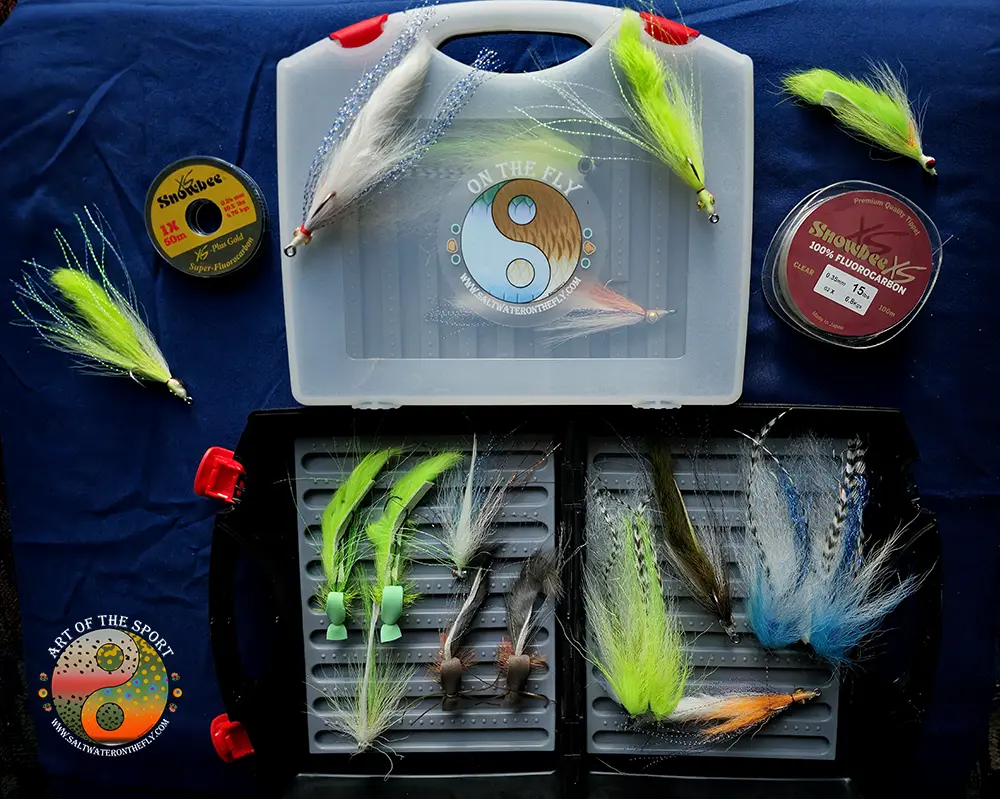
Saltwater on the Fly Boat Boxes. Single and Double sided. Self healing silicone. American Made
10. Squimp
The Squimp is a small, shrimp-like fly with a slim profile. It is often tied with rubber legs for added movement. Neutral colors like tan or olive make it blend in over various bottoms.
11. Bonefish Scampi
Similar in design to a shrimp pattern, this is one of the more realistic-looking imitations available. If fishing over a sandy or lightly colored bottom, a pearl or light pink is preferred. Try tan, brown, or olive if over a darker bottom.
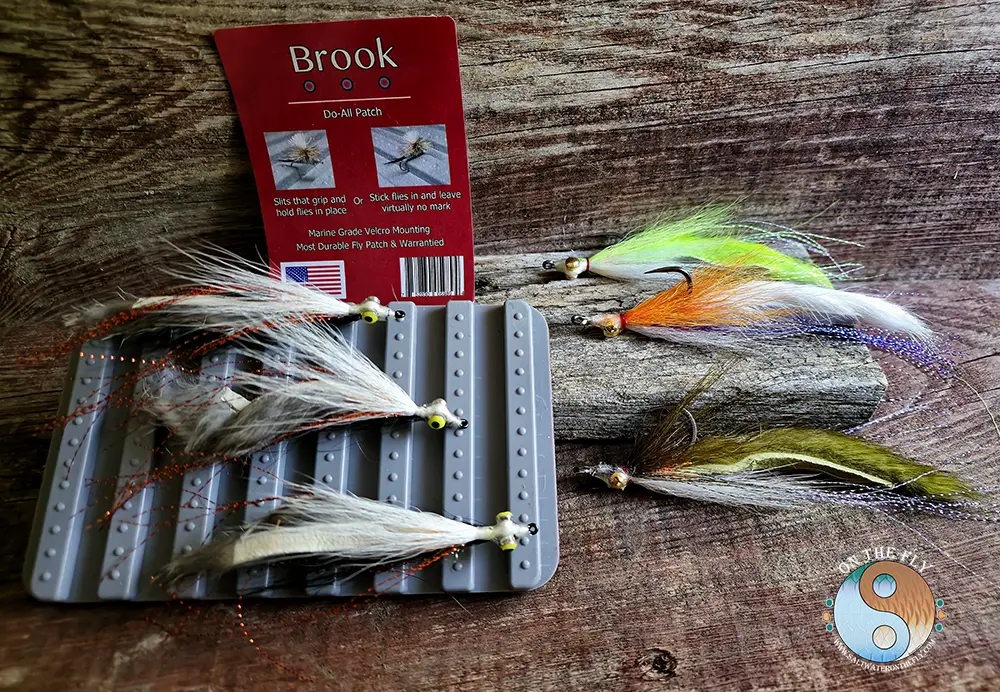
Do It All Patch in the Boat with Flies Ready for Action.
Text content
12. Spawning Shrimp
One of the pricier but also more successful bonefish fly patterns, the Spawning Shrimp often incorporates materials that shimmer. Usually, this pattern has bright spots of pink, orange, or red representing the eggs. You can find some variations of this pattern at fly shops.
13. Bearded Mantis Shrimp
Just like with the Spawning Shrimp, the Bearded Mantis Shrimp also ranks as one of the bestselling. It’s typically tied in natural colors: brown, tan, and blonde with copper or gold flash.
14. Silly Leg Gotcha
Similar to the original Gotcha, this variation includes–you guessed it–silly legs. Adding those rubber legs adds enticing movement to the fly.
Just make sure you use rubber legs in lighter, more natural colors like tan or olive. Avoid the brighter colors when targeting bonefish.
15. Lefty’s Deceiver
Even a pattern developed for saltwater stripers can sometimes fool bonefish. If using a Lefty’s Deceiver, opt for one tied with chartreuse, white, or a mix of colors that contrast the bottom. This makes it easier to track for both angler and fish.
16. Ververka’s Mantis Shrimp
You can find this variation of a mantis shrimp in two basic colors: natural and pink/pearl. Wanting to learn how to tie your own? Scientific Anglers often release videos walking you through how to tie a Ververka’s Mantis Shrimp. For the pink/pearl, try bead chain eyes and lighter color rubber legs.
17. Borski Slider
Imitating a small crab or mantis shrimp, the Borski Slider, tied in olive or brown with rubber legs, is perfect when the wind picks up and casting is tougher.
18. Crabby Patty
Also, a great pattern to fish on windier days, the Crabby Patty has a larger profile than the Mantis Shrimp. Its weedless feature, from its unique design, makes it ideal for targeting areas where mangroves or sea grass may snag the fly. Be sure to choose colors such as tan or olive.
19. Mini Puff
A classic for flats fishing, the Mini Puff, tied in light tan, pink, or white, imitates a variety of prey. It works well in shallow, clear water.
20. Avalon Fly
Although popular in the Florida Keys for its unique construction using bead chain and epoxy, this fly remains quite heavy and drops fast to the bottom.
21. Merkin
Developed by fly-tying legend Tim Flagler, this pattern often incorporates craft fur. Its combination of materials and the movement the fur produces makes for a fantastic shrimp pattern, sure to tantalize many species of saltwater fish, not just bonefish.
22. Surf Candy
While primarily fished for striped bass, the Surf Candy also attracts bonefish.
23. Charlies’s Angel
A combination of both the Gotcha and the Crazy Charlie, you can often find a Charlies’s Angel with rubber legs and flashier materials to entice wary fish.
24. Flexo Crab
Although best used for permit, you’ll often see large bonefish cruising where permit are. The Flexo Crab can catch them all.
25. Raghead Crab
Another option designed primarily for permit but known to catch the eye of bonefish is the Raghead Crab.
26. Let’s Not Forget Surface Poppers
It could be the best day of your life, on the Flats Fly Fishing for Bonefish.
How to Fly Fish Bonefish Flies
Once you’ve selected your flies, knowing how to fish them properly is essential to catch more fish.
Casting
While fly fishing for bonefish, you won’t be casting a mile, so presentation is key. Cast to where you think the fish will be, not where they are now. Lead the fish slightly, so it intercepts the fly naturally.
Use short, quick strips with small pauses when the fish is far away and speed up the retrieves as the fish come closer.
Fly Presentation
Bonefish are spooky, meaning any disturbances can send them fleeing for cover. Casting too many times or landing a fly too hard can scare them. They typically feed along the bottom, making retrieving your fly so it mimics their natural prey essential.
Stripping
Retrieve your fly with a series of short strips to create movement and attract a bonefish’s attention. If they’re not interested in or pursuing your fly, experiment with longer or shorter strips.
Remember to vary the pace based on how active the fish are and their distance from the fly.
Hook Set
A firm, strip set is the most effective way to hook a bonefish. Simply raise the rod tip quickly in a short, strong motion while simultaneously stripping line.
Fighting a Bonefish
Bonefish, for their size, put up an excellent fight. These “silver bullets” are powerful for their size and will strip your fly line down quickly. Once you hook one, make sure your drag is set properly. Strip strike again if needed, then keep the rod tip high. Let the fish run and reel when you can.
Handling
If you’re going to release your fish, proper handling techniques are vital for ensuring survival. Support its weight and avoid touching the gills or squeezing too tightly. If removing the hook, wet your hands first, minimizing slime removal. Release the fish quickly to lessen the risk of tiring or harming the fish.
Once released, make sure the bonefish swims away strongly. Wanting to take a quick photo? You can; just wet your hands, gently lift the fish from the water, hold it out away from your body, then take the photo quickly, immediately placing the bonefish back into the water to regain its strength.
Wind
Most days on the flats, the wind will blow. To best handle windier conditions, try using heavier flies. If the winds get really nasty, a heavier rod can be more helpful than you may think.
An 8 weight rod might be ideal in up to 15 mph wind, but a 10 weight would be preferred at anything over 20 mph. While some anglers simply match their line weight to their rod weight, consider overlining your rod by one line weight. Having the right fly lines to match your fly rod is an essential step in targeting bonefish. If you normally fish an 8 weight, you could get away with simply changing your fly line to a 9 weight. Some consider an overlined 9 weight with a 10-weight line to be ideal. Thou I prefer to fish either a 8 wt. or 10 wt. saltwater fly rods.
Tippet
XS Fluorocarbon tippet, due to its lower visibility, works best. Though you may find monofilament a cheaper, perfectly good alternative. Using 15-20 pound tippet gives the right balance between being seen by the fish and being strong enough to avoid breaking off on sharp coral, rocks, or mangroves.
Some anglers recommend going even heavier. Using lighter tippet sizes (10 or 12-pound test), though less visible in the water, will lead to lost fish from breakage or overly tired, more vulnerable fish that succumb to a shark’s attack after release.
Leaders
For targeting bonefish, most any store-bought leader in 9-foot or 10-foot lengths is a fine choice. Building your own leaders can be fun. It can also provide much-needed insurance in windy conditions as commercially tied ones often have weaker butt sections that will collapse, hindering your casts.
